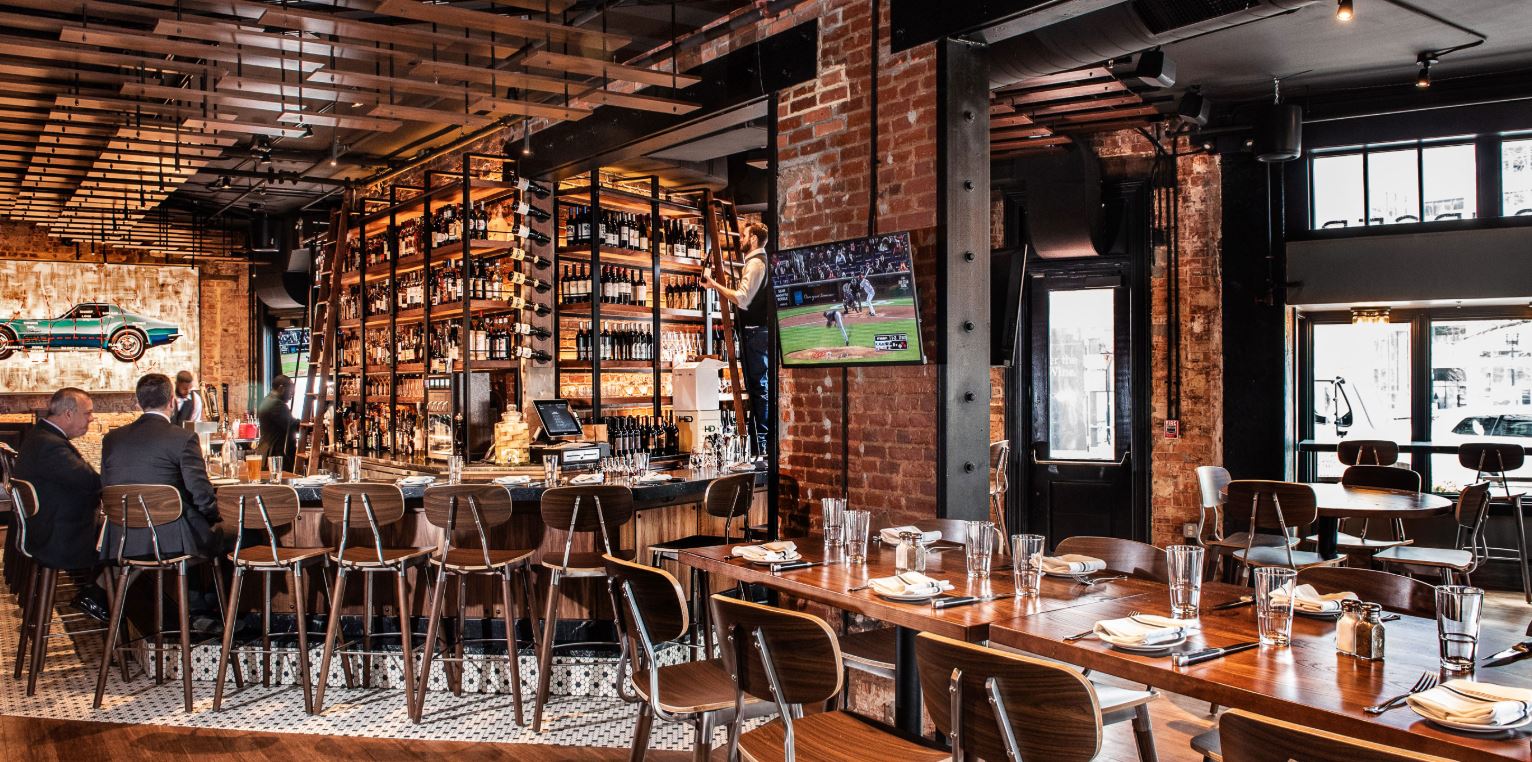Asian Restaurant ISB: A Must-Try Spot for Food Lovers in Islamabad
Wiki Article
Savor Genuine Oriental Cuisine With a Pan-Asian Twist for a Culinary Journey
Starting a culinary journey through authentic Asian food, improved with a Pan-Asian spin, supplies an one-of-a-kind possibility to check out the abundant tapestry of flavors that define the region's diverse culinary practices. This experience invites you to appreciate the splendid balance of preferences-- pleasant, salted, spicy, and sour-- integrated by aromatic herbs and seasonings. Envision the ingenious fusion of Thai curry and ramen or the unanticipated pleasure of sushi burritos. As you ponder these tempting meals, consider the social narratives and historic influences that form them, each bite using a story waiting to be discovered.
Checking Out Pan-Asian Tastes
In the realm of worldwide gastronomy, Pan-Asian food stands out for its exceptional variety and the harmonious interplay of flavors from different Asian cultures. This culinary strategy commemorates the one-of-a-kind ingredients and rich traditions discovered throughout the continent, producing a tapestry of preferences that is both intriguing and satisfying. Trick to Pan-Asian food is its capacity to stabilize different tastes-- pleasant, salted, spicy, and sour-- while highlighting the freshness and quality of each ingredient.From the umami-rich soy sauce of Japan to the fiery chili peppers of Thailand, Pan-Asian food uses an extensive palette of tastes. These components are frequently incorporated in innovative methods, boosting recipes with layers of complexity. For instance, using great smelling herbs such as lemongrass and cilantro, typical in Vietnamese and Thai cuisine, adds a refreshing brightness to dishes, while the unification of coconut milk provides a velvety, rich texture.
The focus on fresh fruit and vegetables and aromatic spices ensures that each dish is not just a feast for the taste buds but additionally for the detects. Pan-Asian cuisine invites diners to start a cooking trip, discovering the huge and differed landscapes of Eastern gastronomy with every bite.
Blend Recipes to Attempt
While Pan-Asian cuisine is commemorated for its typical tastes, the contemporary culinary landscape is significantly welcoming combination dishes that mix these classic components with impacts from various other regions. This innovative technique not only honors the rich heritage of Eastern cookeries however also presents unique preference experiences that attract modern tastes.
A prime example of such a fusion recipe is the Korean-Mexican taco, where seasoned bulgogi beef is wrapped in a warm tortilla, topped with kimchi and a spicy gochujang-infused salsa. This combination weds the bold, savory tastes of Korea with the dynamic, fresh elements of Mexican food. In a similar way, sushi burritos have actually gained popularity, amalgamating the delicate creativity of Japanese sushi with the hearty, hand-held benefit of a burrito, often featuring fusion ingredients like tempura shrimp and avocado with a drizzle of wasabi mayo.
Another noteworthy meal is Thai curry ramen, which infuses the velvety, fragrant flavors of Thai curry into the soothing broth of conventional Japanese ramen, creating a harmonious blend that tantalizes the senses. These fusion recipes expand past simple novelty; they represent a culinary discussion in between societies, motivating expedition and advancement worldwide of Pan-Asian food.
Necessary Active Ingredients and Flavors
To genuinely appreciate Pan-Asian cuisine, one need to comprehend the vital components and flavors that form its structure. This varied culinary style attracts from an abundant tapestry of Oriental traditions, using an unified blend of flavors and appearances. Trick components consist of soy sauce, fish sauce, and oyster sauce, which present a savory umami deepness vital to Oriental dishes. Complementary to these are rice vinegar and mirin, offering a delicate acidity and sweetness.Aromatic aspects are pivotal, with ginger, lemongrass, and garlic being ubiquitous throughout various Pan-Asian recipes. These active ingredients give an aromatic base that enhances the intricacy of flavors. Flavors such as star anise, cardamom, and cinnamon present warmth and character, resembling influences from regions like China and India.

Food Preparation Strategies and Tips
Understanding the art of Pan-Asian cuisine requires familiarity with its distinctive cooking methods, each adding to the dynamic tapestry of tastes this cooking tradition is celebrated for. asian restaurant isb Central to these methods is the stir-fry, a fast food preparation technique that preserves the nutritional integrity and vivid colors of ingredients. Utilizing a frying pan, the stir-fry approach permits even heat distribution, vital for achieving the characteristic appearance and taste balance of Pan-Asian dishes.Another basic method is steaming, specifically common in Chinese cuisine. This mild technique preserves the natural flavors and nutrients of ingredients, making it excellent for fish and shellfish and vegetables. Dumplings, a cherished staple, frequently gain from steaming, leading to soft, succulent appearances.
Barbecuing, likewise important, gives smoky depths to recipes such as Korean bulgogi or Japanese yakitori (Romantic restaurants Islamabad). This method frequently entails marinading components, enabling tastes to pass through deeply prior to cooking over an open fire or warm plate
Finally, understanding the art of balancing tastes-- wonderful, sour, salty, bitter, and umami-- is essential. Correctly layering these aspects can raise a recipe from common to remarkable, using a complex and pleasing cooking experience that symbolizes the essence of Pan-Asian food.
Eating Experiences Worldwide
Throughout the world, Pan-Asian cuisine offers an exceptional dining experience, celebrated for its abundant tapestry of flavors and vivid presentations. This cooking phenomenon has actually transcended social boundaries, capturing the hearts and tastes of food enthusiasts worldwide. In worldwide cities fresh York, London, and Sydney, Pan-Asian dining establishments function as melting pots where culinary practices from Thailand, Japan, China, and past converge, providing diners with a diverse mix of dishes that highlight the area's diversity.The global charm of Pan-Asian cuisine depends on its capacity to provide both credibility and advancement. Cooks masterfully wed typical ingredients such as lemongrass, soy sauce, and miso with contemporary methods, resulting in recipes that are both acquainted and refreshingly brand-new. This fusion allows diners to begin on a cooking trip that appreciates heritage while accepting modernity.
In addition, dining experiences are boosted via thoughtfully created settings that mirror the principles of Pan-Asian aesthetic appeals. From minimalist Japanese-inspired insides to dynamic Thai-themed spaces, each restaurant supplies a distinct setting that enhances the cooking offerings. Consequently, clients are not simply eating a dish but partaking in a cultural experience, making Pan-Asian dining a really worldwide phenomenon.
Conclusion
The exploration of Pan-Asian food supplies a profound understanding of the complex interplay of flavors and culinary customs throughout Asia. By embracing blend dishes such as Thai curry ramen and sushi burritos, the culinary trip not only highlights the flexibility of standard ingredients however additionally showcases cutting-edge modern methods. This gastronomic adventure, enriched by cooking methods and necessary spices, gives an unique opportunity to value the social diversity and culinary artistry that specify Pan-Asian cuisine on a global range.Getting started on a culinary journey with authentic Oriental cuisine, improved with a Pan-Asian twist, uses a special chance to explore the abundant tapestry of flavors that define the area's diverse culinary customs.In the realm of worldwide gastronomy, Pan-Asian cuisine stands out for its impressive diversity and the unified interaction of tastes from numerous Oriental cultures. Secret to Pan-Asian cuisine is its capability to stabilize contrasting tastes-- sweet, salty, spicy, and sour-- while highlighting the freshness and quality of each component.

Report this wiki page